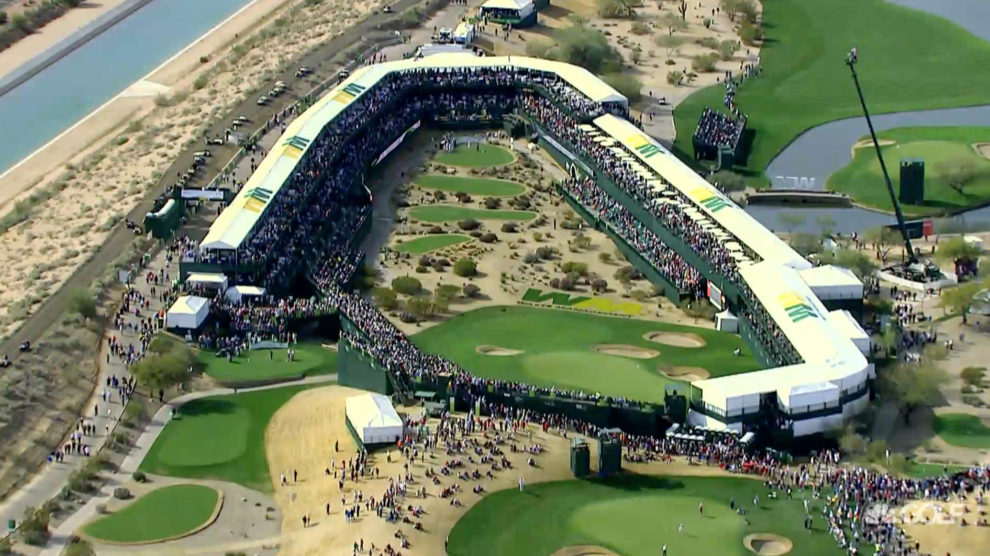From the California desert to the California coast and back to the desert, now in Scottsdale, Ariz., the PGA Tour arrives at TPC Scottsdale this week for the Waste Management Phoenix Open.
Woven into the Sonoran Desert with stunning panoramic views of the McDowell Mountains, TPC Scottsdale serves as Arizona’s professional golf headquarters. The club offers two 18-hole championship caliber courses: the world-famous Stadium Course, designed by Jay Morrish and Tom Weiskopf in 1986, and the newly-renovated Champions Course, crafted by Randy Heckenkemper. The Tour only plays at the Stadium Course ,as it was designed specifically to serve as the stage for the tournament – what’s now become the largest spectator golf event in the world (relatively easy to do when you erect a literal stadium around a single hole).
TPC Scottsdale architecture and history
As for the course itself, it is the blueprint for ‘stadium’ courses (along with Sawgrass) with assistance from the CAP flood-control berm providing excellent viewing areas for massive galleries. Many Tour players really enjoy playing in front of a full house of fans on a course that provides ample birdie opportunities. There’s a solid mix of difficult and easy holes; reachable but hazardous par 5s and the occasional short par 4.
Occasionally players will get a peek at the surrounding mountains (holes 6, 9, 10, 12, 13, 16, 18) but otherwise the setting - compared to other courses in the area - is just kinda ‘meh’. Even after a seven-month, $15 million renovation project led by original co-designer Tom Weiskopf back in 2014 meant to provide more challenges for an event that has become notorious for producing some of the lowest scores on tour it remains a birdie-fest.
During the renovation, notable changes entirely overseen by Weiskopf included completely new greens at holes 2, 3, 4 and 14. And all the greens were resurfaced for improved consistency. Also, being a fan of classic architecture Weiskopf added his own set of church-pew bunkers, a la Oakmont, to the 18th hole to make players think twice about cutting a tight corner over the lake. However, other various changes like moving or elevating greens meant to add difficulty end up just being aesthetic changes for daily play or TV audiences. Tour players are extremely good and always manage to navigate these subtle changes to make pars/birdies regardless.
Hole to Watch
Let’s be honest, no golf fan (casual or die-hard) turns on the TV this week to watch any specific hole other than the 16th.
Hole 16 - Raucous. Rowdy. Loud. The true stadium hole in all of golf. Because they literally build a stadium (20,000-plus people...that’s the size of an NBA arena) around the entirety of the hole. It’s truly an iconic par three with a slightly elevated tee and a green guarded by three bunkers. Depending on hole location and tee placement, this hole may play anywhere from 115 to 180 yards. The shorter yardage here doesn't necessarily make it easier. Players will take in the scenery (if they can possibly ignore tens or thousands of people) with desert from tee to green and the McDowell Mountains in the distance.

